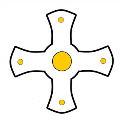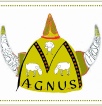S T C U T H B E R T ’ S H O U S E Hermitage of the Diocese of Nottingham

NAME CARDS
The cards on this page have all been commissioned to celebrate the name of an individual. If you would like to commission something similar then please contact me.
Each one of these cards has been tailored to reflect the particular character or circumstances of an individual. They are available as displayed, or if the verse is suitable but the decoration or background is not (some of them are very specific) then it might be possible to replace this element with something more appropriate. Suggested donation for design of a new name card from around £15 per hour. I should be able to give an estimate of how long it is likely to take once I have your ideas.
Acknowledgements: a number of these commissions draw on the work of Andrew Tawn, with his kind permission, from his book NAMING AND BLESSING: A book of name prayers which is available at all good booksellers!




